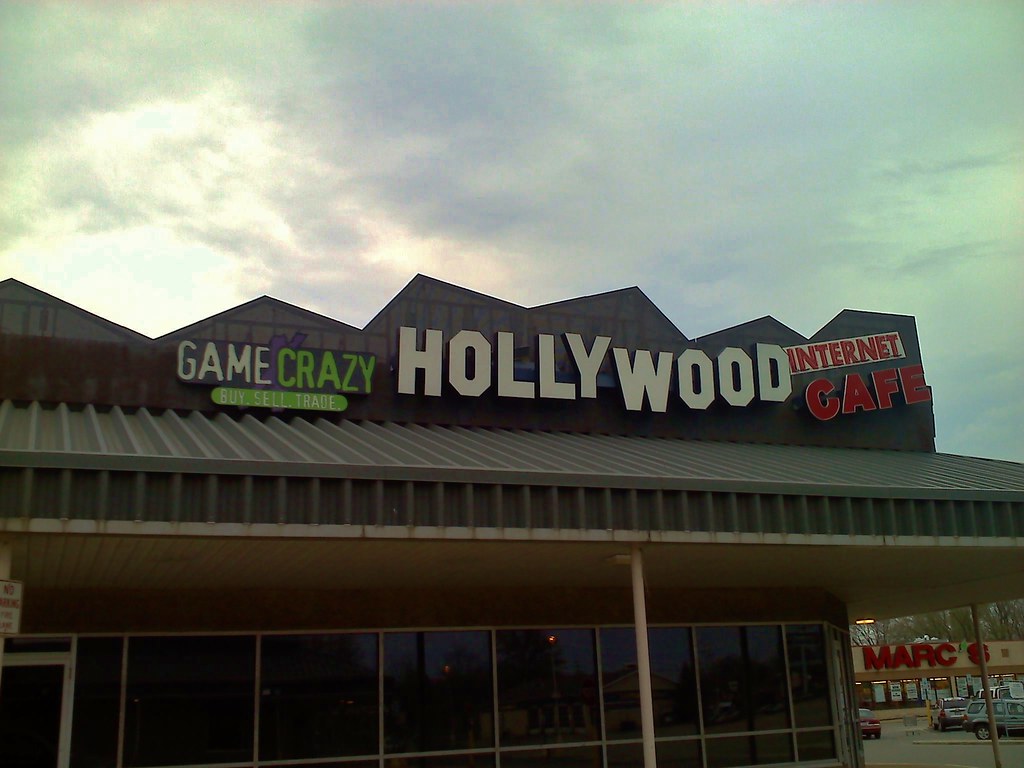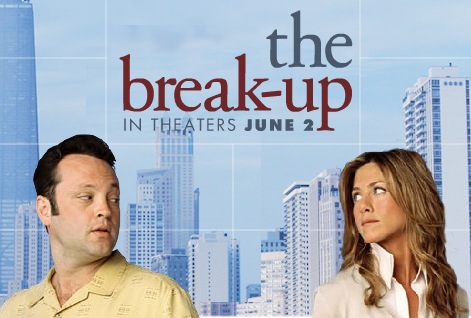
The familiar hum of protest chants and the sight of picket lines have once again descended upon Hollywood, marking a significant and deeply felt moment for the entertainment industry. For many, these scenes — particularly the widespread Writers Guild of America (WGA) and SAG-AFTRA strikes — signify more than just a labor dispute; they represent a fundamental reckoning with an industry undergoing profound transformation. At the heart of this widespread dissatisfaction lies a complex and often opaque system of compensation, particularly the critical issue of residuals in the age of streaming.
Traditionally, residuals served as a vital safety net and a cornerstone of financial stability for writers, actors, and other creative professionals, offering long-term payments for their work as films and television shows were re-aired, syndicated, or distributed on various platforms. However, the rapid ascent of streaming services has dramatically reshaped the economic landscape, replacing a once-dependable income stream with what many now describe as paltry sums, sometimes amounting to mere pennies. This paradigm shift has created a precarious existence for countless creatives, with some facing such economic hardship that they are compelled to live in RVs, despite their contributions to hit productions.
This in-depth examination will delve into the intricate layers of this evolving crisis, exploring the core distinctions between the traditional broadcast model and the streaming economy. We will dissect the new metrics driving studio decisions, understand the challenges inherent in securing fair compensation, and illuminate the stark reality faced by those who craft the stories that captivate global audiences, all within the context of an industry struggling to adapt to its own technological advancements. The ongoing strikes are not merely about higher pay; they are a battle for the very sustainability of creative careers in a radically altered Hollywood.
The ongoing negotiations illuminate a stark chasm between the expectations of creatives and the financial realities or perceived necessities of studios in the streaming age. While writers and actors have voiced increasingly unified demands for compensation structures that reflect the value of their work in this new paradigm, studios have met these proposals with significant resistance, citing a range of concerns from impracticality to profitability. This resistance forms a critical point of contention, fueling the sustained work stoppage.
At the forefront of the guilds’ efforts has been the proposal of a viewership-based residual model, championed by the Writers Guild of America, and an even more ambitious suggestion from SAG-AFTRA for performers to receive a 2% share of the revenue generated from streaming content. These proposals represent a fundamental shift from the fixed residual payments currently in place, aiming to tie compensation more directly to a show’s success on a platform. They seek to restore a sense of shared prosperity that characterized the pre-streaming era.
However, the Alliance of Motion Picture and Television Producers (AMPTP) has unequivocally rejected these advanced compensation models. According to the unions, the studios expressed “fundamental objections” to the 2% revenue share and, in the WGA’s case, flat-out rejected the viewership-based model. This steadfast refusal to engage meaningfully on these core proposals has been a primary driver of the prolonged stalemate, leaving creatives feeling unheard and undervalued.

1. Studios’ Objections to a Blanket Revenue Share
The AMPTP’s primary objection to a direct revenue share, such as SAG-AFTRA’s proposed 2% model, centers on its perceived inflexibility. Studio insiders have described a blanket revenue share as creating a “one-size-fits-all approach” that is ultimately “unworkable” within the complex and varied financial ecosystems of individual streaming services. This suggests a desire for bespoke compensation structures, or perhaps simply a reluctance to cede a fixed percentage of burgeoning streaming revenues.
While the studios have indicated a willingness to increase fixed residuals for streaming content, this willingness does not extend to a revenue-sharing framework. This distinction is crucial, as increased fixed residuals, while offering a greater upfront sum, do not fundamentally alter the disconnect between a show’s popularity and the long-term compensation for its creators. The guilds argue that this misses the point of reflecting a show’s sustained value.
Duncan Crabtree-Ireland, SAG-AFTRA National Executive Director, expressed frustration over this rejection, stating that the proposal had been on the table since day one of negotiations and that the companies had “never come back to us with any substantive response.” He added, “Their answer was, ‘We aren’t interested in talking about it.’ So it’s going to be very hard to reach an agreement on something when the companies won’t even discuss it with you.”

2. The Shift from Show-Centric to Service-Centric Incentives
One of the most profound shifts underpinning the studios’ stance is a fundamental change in their business objectives. As Paul Hardart, a professor at the NYU Stern School of Business, explains, incentives were once closely linked: both writers and studios aimed for high ratings and viewership for individual shows. Today, however, a streamer’s primary goal is to attract and retain subscribers to its overall service, rather than to maximize the success of any single title.
This reorientation means that studios now primarily focus on metrics like ARPU, or average revenue per user. Their concern is aligned with the aggregate performance of the entire streaming service, rather than the specific contributions of an individual show or film to that service. This paradigm shift, driven by technological advancements, has fundamentally altered how studios conduct business and how consumers engage with content.
The consequence for writers and actors is that the direct correlation between a show’s popularity and their residual earnings has largely dissolved. Even wildly successful programs may generate minimal residuals if they are viewed as merely one component of a broader content library designed to entice and keep subscribers. This makes it challenging for creatives to argue for compensation based on a show’s individual impact when the underlying business logic has moved away from that very concept.

3. The Data Dogfight: Defining Success in the Streaming Era
Central to the disagreement over compensation models is a fierce “data dogfight” — a struggle to agree upon a universally accepted measure of success for streaming content. Experts highlight that the infrastructure to support new compensation deals may exist, but the more formidable challenge lies in getting major studios and guilds to concur on a metric that satisfies all parties. This exercise, it seems, may be inherently impossible given divergent interests.
Streamers have historically maintained tight control over audience data, keeping it “close to the chest” and only occasionally self-reporting metrics as they see fit. Netflix stands as an exception, consistently self-reporting some viewership data, though even this does not amount to full transparency. This opacity empowers the studios by providing an informational advantage, allowing them to frame compensation discussions from a position of superior knowledge.
David Offenberg, an associate professor of entertainment finance at Loyola Marymount University, articulates this power dynamic succinctly: “Data transparency is related to power. This is a fight about power.” He argues that streamers exploit their control over this data by not compensating creators commensurate with the true value of their work, particularly for subsequent seasons, because creators lack the essential information to negotiate effectively.

4. SAG-AFTRA’s Proposal: Leveraging Parrot Analyticsa.
In an effort to introduce an objective, third-party metric, SAG-AFTRA proposed using Parrot Analytics’ content valuation tool to determine the revenue generated by each piece of streaming content. This suggestion represents a significant departure from internal studio metrics, seeking a common ground for evaluating a show’s worth that is independent of the studios’ proprietary data.
The guild’s proposal envisioned that quarterly, producers would pay 2% of the quarterly “Revenue Contribution” for each series or film, as determined by Parrot Analytics. This sum would then be divided pro rata among the principal cast, based on factors like time and salary units, and would be in addition to existing Streaming Revenue Sharing payments. It aimed to create a more equitable distribution linked to a show’s actual economic impact.
Unlike traditional viewership metrics from services like Nielsen, or the self-reported figures that often focus on viewing time, Parrot Analytics, a firm led by Wared Seger, employs a broader array of data points. This includes Google searches and social media engagement, alongside quarterly earnings data, subscriptions, and ad revenue. The goal is not merely to determine how many people watched a show, but rather to estimate its overall impact on a studio’s revenue, offering a more holistic valuation.

5. Studios’ Dismissal of Parrot Analytics as “Opaque”
Despite SAG-AFTRA’s rationale for its adoption, the AMPTP rejected the Parrot Analytics proposal. Their stated reasons included the classification of these metrics as “opaque,” highlighting that the data generated by Parrot Analytics is not freely available to anyone without a subscription to their service. This raises questions about the transparency and verifiability of the proposed measurement system in the eyes of the studios.
Furthermore, the AMPTP contended that Parrot Analytics’ metrics “lack any demonstrable link to the actual revenue received by the service in the form of new or retained subscribers.” This critique underscores the studios’ preference for internal, proprietary data that they believe more accurately reflects their direct financial gains. They are reluctant to embrace a third-party system whose correlations to their bottom line they dispute.
Duncan Crabtree-Ireland, in response to the studios’ rejection, defended the guild’s choice, stating that Parrot’s approach “reflected a more broad-based and objective approach to evaluating that without the kind of insight data that the companies have been unwilling to share so far.” This highlights the fundamental trust deficit: the guilds believe an external, independent measure is necessary precisely because studios withhold their own detailed performance data.
6. The Intricacies of Building an Internal Success Metric
Within the streaming landscape, the definition of a “successful” series or film is multifaceted, primarily categorized into two types: those that attract new subscribers and those that retain existing ones. Studios meticulously collect a vast array of internal data points for each title, including global and U.S. hours viewed, the number of unique accounts that engaged with a title, and the completion rate for each account. These data points are critical for understanding content performance.
Beyond basic viewership, studios also strive to quantify how much engagement a show drives and its efficacy in reducing subscriber churn – the rate at which customers cancel their subscriptions. These are complex calculations that factor into the overall value proposition of any given piece of content, influencing decisions about renewals, marketing, and library curation. The inherent challenge is assigning a monetary value to these varied contributions.
The significant hurdle in reaching a consensus on a single metric is that each of these data points, if used as the primary measure, would likely yield a different answer regarding a show’s monetary success. Individual studios are inclined to prioritize certain metrics over others, based on their strategic objectives, making it exceedingly difficult to find a common, agreeable standard for compensation across the industry. This fragmentation of data valuation contributes directly to the current impasse.
Read more about: Your Health, Your Voice: Essential Questions to Empower Every Doctor’s Visit

7. The Elusive Nature of Data and “Different Business Logic”
Andrew Rosen, a former Viacom executive and founder of the streaming newsletter PARQOR, cautions that data, while undeniably powerful, “can be used to tell any story.” This inherent flexibility of metrics presents a challenge for both sides in negotiations, as different interpretations can support vastly different conclusions about a show’s value and, by extension, a creator’s compensation. The question then becomes not just *what* the data says, but *whose* story it tells.
Rosen introduced the concept of a “different business logic” that the guilds might need to embrace. He suggested that if actors are willing to be quantified for their role in driving engagement and reducing churn, that could be a productive avenue for conversation. This framework shifts the focus from simply identifying hits and flops to understanding the more nuanced, algorithmic influence of content on a platform’s overall performance. It demands a more sophisticated understanding of value.
However, translating this complex data into a hard dollar amount for compensation remains a daunting task, described by David Offenberg as “such a can of worms that [the studios and actors] don’t even want to open.” He argues that building mathematical models to estimate revenue contribution in a way that satisfies everyone is “absolutely impossible,” due to the necessary assumptions and potential for internal strife within unions over fairness. Despite SAG-AFTRA’s willingness to discuss any metric, the practical implementation poses significant challenges.

8. Content Erasure: A Troubling Phenomenon
The economic pressures on streamers have led to a deeply unsettling phenomenon: the systematic removal of original programming from their libraries. Actor Diana-Maria Riva experienced this firsthand when “Gordita Chronicles,” a critically lauded family comedy she starred in, was not only canceled but subsequently wiped from HBO Max. This act, she recounted, felt like “an added punch to just say, ‘Now we’re going to wipe the evidence of you ever having been here.’” It highlighted a harsh reality for creatives.
Riva’s experience is not isolated; HBO alone removed dozens of shows in 2022, including high-profile titles like “Westworld,” “The Time Traveler’s Wife,” and “Minx,” alongside numerous animated and reality series. This troubling trend has since been replicated by other streamers, demonstrating a systemic shift in how platforms manage their content portfolios and their obligations to the work and creators involved.
For creatives, the emotional and professional impact of such erasures is profound. The removal of a show from public access effectively renders their work invisible, undermining its legacy and the potential for future discovery. “It was already heartbreaking,” Riva explained, reflecting on the initial cancellation, “But then it’s an added punch to just say, ‘Now we’re going to wipe the evidence of you ever having been here.’” This practice exacerbates the already precarious nature of creative careers.
9. Motivations and Criticisms of Content Erasure
Streamers’ decisions to erase content are largely driven by financial imperatives. Amid a broader downturn in the tech and media industries, there is immense pressure to cut spending and achieve profitability, rather than continue “chasing growth at all costs.” Removing original shows from libraries can facilitate significant tax write-downs, particularly during mergers or corporate restructuring, and to a lesser extent, save on residual payments that would otherwise continue for the life of the content on the platform.
The studios defend this practice by arguing that they never promised perpetual availability for shows. Casey Bloys, chair and CEO of HBO and HBO Max, contended that “The idea that everything a company produces will be in one spot forever and ever, for $15 a month, for eternity, is a relatively new concept… not viable.” This perspective frames content erasure as a necessary adaptation to a hyper-competitive, evolving market where balancing ample offerings with sheer survival is paramount.
However, these actions have drawn sharp criticism, particularly from the guilds, who argue that they disproportionately affect marginalized voices and shortchange creatives. The Writers Guild of America West decried HBO’s removals, stating it “illustrates how consolidation increases the power of gatekeepers at the expense of marginalized voices.” They cited the removal of shows like “Gordita Chronicles” and “Tuca & Bertie,” an animated series featuring women of color leads, as examples of this concerning trend.
10. The Far-Reaching Consequences of Content Disappearance
When a show is erased from a streaming library, the consequences ripple far beyond the immediate financial implications for the studio. For the creators, it means that their work may never be seen again by potential new viewers, effectively limiting its reach and cultural impact. Brigitte Muñoz-Liebowitz, showrunner for “Gordita Chronicles,” lamented, “Our communities are humanized through comedy. And to not have the show be there as part of our media lexicon, it shows a regression to me.”
From a professional standpoint, the disappearance of content creates an unsettling uncertainty for actors and writers about the longevity and accessibility of their contributions. Juan Javier Cardenas, who played Cucu’s father in “Gordita Chronicles,” expressed a sentiment common among creatives: he once took solace in knowing his canceled work would endure, but that’s no longer the case. “To know that in the end… that it won’t be available for people in the future to watch and enjoy — that’s a very sad thing.”
Crucially, content erasure directly impacts residuals. While streamers argue they need to save money, the practice cuts off a potential, albeit diminishing, revenue stream for creatives. For actors like Diana-Maria Riva, residuals are vital to meeting the annual income threshold (currently $26,470) required to maintain insurance eligibility through SAG-AFTRA, making the loss of even small payments a significant threat to their and their families’ healthcare access.
Read more about: Beyond the Stage: 11 Pivotal 1970s Moments That Forged the Future We Know Today
11. The Core of the Power Dynamic: Data and Compensation
At its heart, the dispute between the guilds and the studios is a fundamental battle over power, inextricably linked to data transparency. As David Offenberg asserted, streamers wield immense power because they possess all the proprietary data regarding content performance and subscriber engagement. This information asymmetry allows them to dictate terms and undervalue creative contributions, as writers and actors lack the insights to accurately assess their worth.
This imbalance perpetuates what some observers describe as a “game of greed.” Studio executives can earn millions and even billions of dollars annually, often tied to the overall performance of their streaming services, while the very creatives responsible for generating the content that drives subscriber growth receive what are often described as “paltry sums” or even “pennies” in residuals. This discrepancy is precisely what the striking guilds are fighting to rectify.
The absence of transparency allows streaming services to profit significantly from content without being compelled to share a commensurate portion of that revenue with the individuals whose talent makes it possible. Duncan Crabtree-Ireland articulated this frustration clearly: “The answer needs to be yes. It is not okay anymore for companies to just bring in huge amounts of revenue from people’s work and not share it with them.” This demand for a fair share underscores the deep-seated power struggle at play.

12. Streaming’s Profitability Challenge and Industry Realities
Andrew Rosen revealed a “dirty secret” of the streaming landscape: aside from Netflix, most streaming services are not yet profitable. This financial reality presents a complex backdrop to the guilds’ demands. Studios argue that increased compensation asks would make their already struggling businesses even harder to turn a profit, potentially deterring future investment in content creation or even prompting them to scale back their streaming ambitions. This forms a significant part of their resistance.
The rapid acceleration into the streaming era, driven by Netflix’s early success, compelled every legacy studio to launch their own platforms, often without fully developed sustainable business models. This rush to compete, coupled with the entry of tech giants like Apple and Amazon into the content arms race, has placed traditional studios like Disney, Warner Bros. Discovery, and NBCUniversal at a disadvantage, intensifying the pressure to control costs.
Rosen suggests that this new era is inherently “less lucrative for all involved.” He points out that none of these streaming businesses will deliver the kind of revenue that traditional linear television or syndication once did for creatives. This stark economic reality necessitates a fundamental rethinking of compensation, moving beyond the expectations set by a bygone era of entertainment distribution. It is a harsh truth the industry is grappling with.
Read more about: Is the Theaters vs. Streaming War Over? Unpacking the One Trend That Tells the Whole Story

13. The Erosion of a Creative Safety Net: Residuals as Livelihood
Paul Hardart emphasized that the technological shift in how studios operate and how consumers engage with content has created a “totally different paradigm” for the industry. This necessitates a fundamental re-evaluation of how writers and other creatives are compensated. The once-dependable flow of residuals, which served as a crucial safety net and a cornerstone of financial stability, has largely evaporated, replaced by an income stream that offers little security.
For many artists, particularly those in the early to mid-stages of their careers, residuals are not merely a bonus; they are a vital source of passive income that helps sustain their financial needs while they pursue their craft and wait for their next project. Without this consistent, albeit variable, income, many struggle to pay bills, leading to economic precarity, with some resorting to living in RVs despite their contributions to hit shows.
This underscores why the issue of streaming residuals is so central to the current strikes. It is a fight for the very sustainability of creative careers in Hollywood, seeking to reform a “flawed system running Hollywood for decades.” Creatives assert that they cannot continue to dedicate their talent and labor to an industry that systematically undervalues their contributions, particularly when their work generates billions in revenue for the platforms.

14. A Battle for the Future of Hollywood’s Creative Class
The ongoing strikes represent more than just a demand for higher pay; they are a profound reckoning with the fundamental power dynamics that have long governed Hollywood. The WGA and SAG-AFTRA are not merely seeking incremental adjustments to contracts, but a wholesale transformation of how value is recognized and distributed in an industry undergoing radical change. This is a battle for equitable treatment and professional dignity.
This sentiment is echoed by Paul Hardart, who notes that the world has undeniably shifted, and a “new paradigm has to be developed.” He believes there needs to be “a new way of thinking about how people are compensated that basically align interests.” The current standoff, therefore, is not just about financial figures, but about establishing a sustainable and just future for the creative professionals who are the lifeblood of the entertainment industry.
Andrew Rosen provocatively questioned whether the current leadership in Hollywood, primarily experienced in managing traditional studios and linear networks, are “the right people to solve that problem.” He suggests that an “uncomfortable truth” is emerging from the standoff: that these leaders may not be equipped to navigate the unprecedented challenges posed by streaming and emerging technologies like AI, which further complicates the future landscape for writers.
Read more about: Beyond the Boardroom: Mark Cuban’s Essential Reading List for Entrepreneurs and Visionaries

15. The Long Road Ahead: Realigning Interests in a New Era
The impasse between the guilds and the studios, despite weeks of picketing and negotiations, remains deep, revealing fundamental disagreements over the economic model of streaming. While both parties would undoubtedly prefer to avoid a prolonged work stoppage, the situation has devolved into a high-stakes “brinksmanship,” as described by Paul Hardart. The studios, on one hand, are betting that they can withstand the pressure, while the unions are testing the resolve of the industry to continue without its essential creative workforce.
Ultimately, the core demand from the guilds is a realignment of interests. They contend that there are “huge amounts of money being spent on content” within the streaming ecosystem, and that a fair mechanism must be established for creatives to share in that prosperity. It is a call for a system where the success of a platform, built on the talent and labor of writers and actors, translates into fair and transparent compensation for those who bring stories to life.
As the industry continues to evolve, with new challenges like artificial intelligence already posing a “grave concern to the Writers Guild” even amidst current negotiations, the need for a sustainable and equitable framework becomes ever more urgent. This strike is a pivotal moment, shaping not just the immediate future of Hollywood labor, but the very economic foundation upon which creative work will be valued for decades to come. The question remains whether the industry’s titans are prepared to meet the moment and forge a truly new paradigm for all involved.







